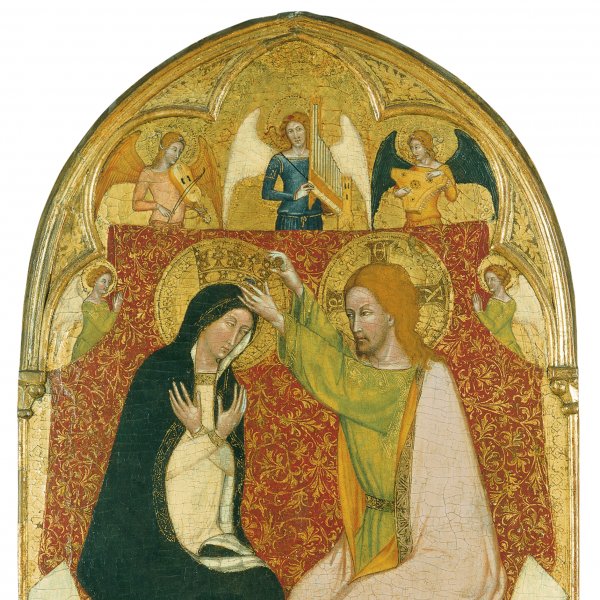Master of 1355
This anonymous painter was active in the third quarter of the 14th century in western Emilia and probably also lower Lombardy. His artistic personality has been reconstructed through a group of works, formerly part of a polyptych that was probably painted for a Franciscan church. These compositions are now divided between various museums: the central panel of The Coronation of the Virgin with five Angels is in the Museo Thyssen-Bornemisza, Madrid; the left wing with Saint Louis of Toulouse and Saint John the Baptist is in the Galleria Robolzi in Monte Carlo; and the right wing with Saint Anthony of Padua is in a private collection in France. It was Boskovits in 1990 who gave this artist his present name, based on the inscription that appears on the panelin Madrid and which includes the date of 1355. This master must have trained between 1330 and 1340 and his style reveals some similarities with the altarpiece in the Brera, Milan, signed by Jacopino and Bartolomeo da Reggio and depicting The Crucifixion, The Annunciation and thirty figures of saints. This painter’s style can also be compared to that of the Master of the Coronation of Saint Lawrence, named after a painting of that title in Piacenza. His style combines the expressivity of Trecento
Bolognese painting with the influence of Tommaso da Modena, but with a greater interest in a gentle naturalism, strong modelling and an elegance of line that has less in common with the above-mentioned sources. The artist is also thought to have painted Saint George freeing the Princess in Fidenza cathedral, a work that reveals an interest in naturalistic and descriptive details as well as the use of an incisive, drawn line.





